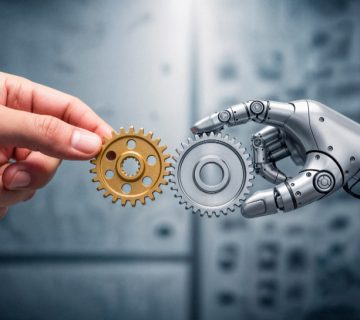In the evolving landscape of education, the intersection between artificial intelligence and human potential has become the new frontier for personalized learning. Next-generation learning platforms represent more than digital classrooms; they are intelligent ecosystems that learn from learners just as much as they teach to them. These systems leverage vast streams of real-time data — from engagement patterns to cognitive performance metrics — to adapt content, pacing, and support according to each individual’s unique learning trajectory.
At the heart of this transformation lies the algorithm: an intelligent engine that analyzes learner behavior, predicts future needs, and customizes educational experiences on the fly. This algorithmic personalization enables the transition from a one-size-fits-all model to a dynamic, learner-centric experience. Instead of presenting the same curriculum to every student, AI-driven systems tailor instruction based on interests, proficiency, and even emotional feedback collected through multimodal analytics such as speech tone, click rhythms, and facial recognition (where ethically permissible).
Such adaptability ensures that learning no longer remains an act of passive content consumption. Instead, it becomes an interactive dialogue — a symbiotic exchange where students co-create their knowledge journey alongside machines designed to recognize effort, curiosity, and personal growth. When integrated into modern educational ecosystems, these intelligent systems refine their recommendations with each interaction, nurturing long-term mastery, motivation, and engagement.
Furthermore, algorithmic personalization supports educational equity by recognizing cognitive diversity and adjusting resources to address various learning styles and accessibility needs. Whether a student thrives through visual simulations, auditory storytelling, or kinesthetic challenges, the platform’s AI interprets these preferences and provides materials that resonate most deeply. This harmonization between data-driven insight and human understanding is shaping the new architecture of education — one that honors individuality while maintaining academic rigor.
Yet the promise of personalization must also align with principles of data ethics and transparency. Trust is paramount. The algorithms shaping learning pathways should be explainable, fair, and free from bias. Institutions, developers, and educators must collaborate to ensure that technology remains a facilitator rather than a gatekeeper. In this sense, the future of personalized learning is not just algorithmic — it is ethical, human-centered, and inclusive.
Next-generation learning platforms thus act as bridges connecting traditional pedagogy with the flexibility of artificial intelligence. They empower teachers with actionable insights, free learners from rigid frameworks, and foster a democratized global education landscape. The ultimate goal is not simply to teach but to transform — to turn data into wisdom, and technology into a powerful ally for lifelong learning.
The architecture underlying next-generation learning systems represents a sophisticated interplay between multiple branches of artificial intelligence, each designed to interpret, respond to, and amplify human learning behavior. At the foundation lie machine learning models that continuously analyze vast quantities of data — quiz results, discussion posts, browsing times, and even micro-behaviors like hover duration or hesitation before answering. These insights form a digital cognitive profile that helps platforms understand not just what students know, but how they learn.
Natural Language Processing (NLP) is another cornerstone technology that allows systems to interpret written or spoken inputs, evaluating comprehension through dialogue-like interactions. Through NLP, a platform can identify conceptual misunderstandings, recommend supplemental materials, or even simulate Socratic questioning techniques that challenge learners to think critically. Paired with semantic mapping, these platforms establish relationships between concepts, allowing learners to explore interconnected knowledge webs rather than isolated facts — a shift from linear progression to multidimensional learning.
Meanwhile, behavior modeling adds depth by encoding emotional engagement and motivational states. Emotion-aware algorithms, trained through affective computing, detect subtle indicators of frustration, confidence, or curiosity. If a student appears disengaged, the system might adjust difficulty levels, modify tone, or introduce gamified feedback. This ensures that learning remains emotionally resonant and cognitively stimulating, maintaining both focus and self-efficacy.
Critical to this architecture is the integration of real-time feedback loops. Performance is no longer assessed through static grades at the end of a module but tracked dynamically through predictive analytics. AI can identify when a learner is likely to struggle and proactively intervene before difficulties escalate. Teachers, acting as mentors within this AI-assisted environment, receive analytics dashboards that highlight students’ needs, allowing for timely human intervention where empathy and contextual judgment are required.
Yet personalization, no matter how advanced, must remain transparent and accountable. Hence, many contemporary frameworks include an “explainability layer,” enabling both learners and educators to understand why a recommendation was made. This fosters metacognitive awareness — the ability of learners to not only absorb knowledge but reflect upon their learning journey with agency and insight.
Cross-disciplinary collaboration also plays a crucial role. Cognitive psychologists, AI engineers, ethicists, and instructional designers work together to ensure fairness, inclusivity, and the responsible application of educational data. This cooperative design ensures algorithms remain adaptive without compromising privacy or autonomy. The synergy between algorithmic precision and human intuition thus builds a learning environment that is not merely efficient but deeply empathetic.
As the world continues to shift toward knowledge economies driven by innovation, the importance of continuously personalized, ethically guided education cannot be overstated. These platforms are not replacing teachers; they are augmenting them — turning data into empathy, algorithms into understanding, and global connectivity into genuine opportunity. In this new paradigm, education becomes an intelligent, evolving dialogue — one that celebrates individuality while scaling knowledge access across borders.
The promise of next-generation learning platforms, powered by responsible AI, points toward an educational future that is fluid, inclusive, and profoundly human — where technology not only teaches us but learns from us, shaping a world in which every learner has the opportunity to grow according to their own rhythm, purpose, and potential.





No comment